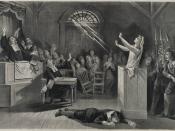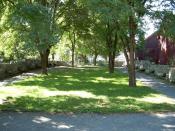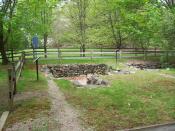Nathaniel Hawthorne's novel, The House of the Seven Gables, was influenced by events in Salem's history which occurred between the town's founding in 1626 and the publishing of the novel in 1851. Incorporated into the novel were historically important people and events, along with Hawthorne's own views of Salem and its history. Nathaniel Hawthorne's The House of the Seven Gables tells a romantic story set before the Civil War, with characters who are haunted by a gloomy past.
In the first chapter of The House of the Seven Gables, Hawthorne narrates the history of an unnamed Massachusetts town which historically and geographically resembles Salem (Short 275). The first similarity between Salem's history and the history of Hawthorne's fictional setting is the founding of the town. A conflict arose between two of the first settlers of Salem, Roger Conant and John Edicott, which is similar to the fictional conflict between Matthew Maule and Colonel Pyncheon.
The poor settler Conant, as the leader of the Salem settlement, was believed to have built the first house in Salem. Years later, Edicott was chosen as the new governor and built himself a mansion with materials that were once Conant's (Emery 131). Similarly, Hawthorne's anonymous town's history begins with plebian Matthew Maule building a house, and then later a wealthier, higher classed man named Colonel Pyncheon desiring the property.
The Salem Witch Trials played a significant role in The House of the Seven Gables. In the novel, "Hawthorne [used] a fictive retelling of the Puritan madness in which a citizen of the unnamed town, Matthew Maule, is hanged as a witch" (Oliver xvi). Hawthorne's great-great-grandfather had been a judge during the Salem Witch Trials. John Hathorne had interrogated the legendary Sarah Good, one of the first innocent "witches" to be hanged at...


